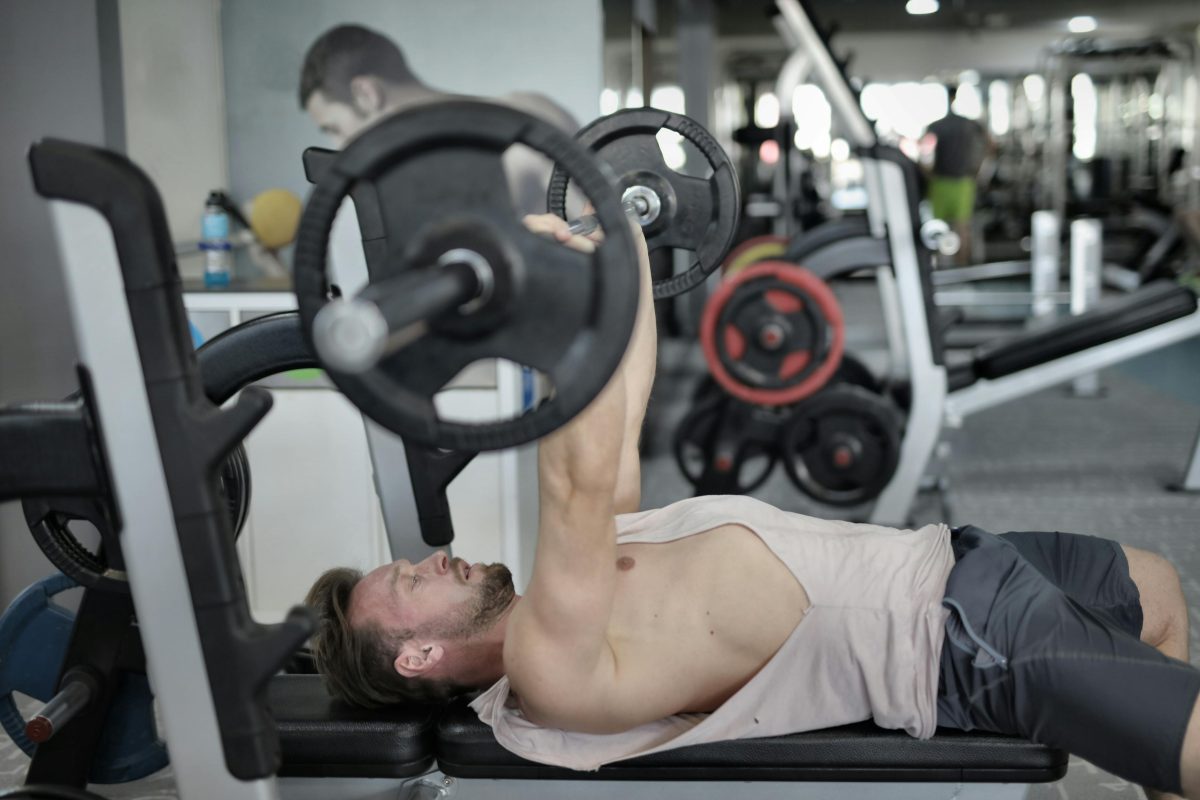Last Updated on: 14th July 2024, 09:29 am
Introduction to Powerlifting

Powerlifting, a strength sport consisting of three attempts at maximal weight on three lifts: squat, bench press, and deadlift, has roots tracing back to ancient Greek and Roman times, evolving significantly into the competitive sport we know today. Its appeal lies in its simplicity and the profound sense of achievement as one witnesses tangible progress in strength. This sport attracts individuals keen on pushing their limits, building not just physical but mental fortitude.
The powerlifting community is a tapestry of camaraderie, support, and mutual respect. Newcomers are often surprised by the welcoming atmosphere, where encouragement flows freely, and the collective goal is to uplift every member. This culture of inclusivity and encouragement makes powerlifting more than a sport; it’s a journey shared by many, fostering connections that extend beyond the gym. Whether you’re looking to surpass your personal bests or simply build strength, powerlifting offers a path filled with challenges, triumphs, and the unwavering support of fellow lifters.
Understanding the Basics of Powerlifting

The Three Main Lifts
- Squat: Challenges your lower body.
- Bench Press: Targets your chest and arms.
- Deadlift: Demands power from your back, legs, and grip.
Essential Equipment
Powerlifting is not just about raw strength; it’s also about the strategic use of equipment to enhance performance and prevent injury. Shoes designed for stability, belts that support your core during heavy lifts, and wraps to protect your wrists and knees are all part of a powerlifter’s arsenal. This gear, when used correctly, can make a significant difference in your lifting capabilities, allowing you to push further, safely.
The Importance of Form and Technique
Perhaps the most critical aspect of powerlifting is the emphasis on proper form and technique. It’s the cornerstone of both progress and injury prevention. A well-executed lift, with attention to form, maximizes efficiency and power output, while minimizing the risk of injury. Beginners are encouraged to invest time in learning and practicing these techniques, often with the guidance of experienced lifters or coaches. This foundation not only sets the stage for future gains but ensures a long, rewarding powerlifting journey.
As you embark on this path, remember, powerlifting is more than just lifting weights; it’s a test of character, a measure of discipline, and a celebration of incremental victories. With each lift, you’re not just moving weight; you’re building a stronger, more resilient version of yourself.
Getting Started with Powerlifting

Setting Realistic Goals and Expectations
Embarking on a powerlifting journey begins with setting realistic goals. Understand that progress is a slow, steady climb, not a sprint. Celebrate the small victories, whether it’s adding five pounds to your lift or perfecting your form. These milestones are the building blocks of success, guiding you toward your larger ambitions.
Finding a Coach or Mentor
Powerlifting is a complex sport, demanding more than just brute strength. A coach or mentor can provide invaluable guidance, from refining your technique to crafting a personalized training plan. Their experience can help you navigate the challenges of powerlifting, offering support and motivation when you need it most. This relationship is a cornerstone of your development, propelling you forward with wisdom and encouragement.
Choosing the Right Gym for Powerlifting Training
The right environment can make all the difference in your training. Look for a gym that not only has the necessary equipment but also fosters a supportive community. A space where fellow lifters share your dedication can be incredibly motivating. Additionally, consider the availability of powerlifting-specific amenities, such as platforms and specialized bars. This commitment to your sport will be mirrored in the progress you see.
As you step into the world of powerlifting, remember, it’s a journey of self-discovery and strength. With realistic goals, the right guidance, and a supportive environment, you’re laying the foundation for a rewarding and transformative experience. Powerlifting is not just about the weights you lift; it’s about the resilience, discipline, and strength you build along the way.
Developing Your Powerlifting Training Plan

The Role of Periodization in Powerlifting
Periodization is the backbone of any successful powerlifting program. It involves structuring your training into phases, each with a specific focus, such as building strength, power, or muscle endurance. This strategic variation not only prevents plateaus but also prepares your body for peak performance on competition day. By cycling through periods of high volume, moderate intensity, and then tapering down to lower volume, higher intensity, your body can recover and grow stronger.
Balancing Volume and Intensity in Your Workouts
Finding the right balance between the amount of weight lifted (intensity) and the total number of repetitions (volume) is crucial. High volume workouts are essential for building muscle and technique, while high intensity sessions increase strength. Striking a balance ensures progressive overload, driving gains without overtraining.
Incorporating Assistance Exercises to Improve Main Lifts
- Front Squats: Complement your primary squat movement.
- Overhead Presses: Enhance upper body strength for better bench press performance.
- Rows: Strengthen the back for a more powerful deadlift.
Recovery and Rest Days
Recovery is not just a part of your training; it’s as important as the lifts themselves. Rest days allow your muscles to repair and grow stronger. Incorporating active recovery, such as light cardio or mobility work, can further enhance your progress. Listening to your body and giving it the time it needs to recover is paramount for long-term success in powerlifting.
Embarking on a powerlifting journey requires a well-thought-out training plan that balances intensity and volume, incorporates assistance work for comprehensive strength development, and prioritizes recovery. With these elements in place, you’re setting the stage for a rewarding and successful path in powerlifting.
Nutrition and Diet for Powerlifters

The Importance of Nutrition in Strength Training
Nutrition is the cornerstone of any successful powerlifting regimen. It fuels your workouts, aids in recovery, and helps build muscle mass. Without the right nutrients, your body can’t perform at its peak, making it harder to hit new personal records. A well-planned diet ensures you have the energy for intense training sessions and supports muscle repair afterward.
Macronutrient Ratios for Powerlifting
Powerlifters need a balanced intake of proteins, carbohydrates, and fats. Proteins are crucial for muscle repair and growth. Aim for 1.6 to 2.2 grams per kilogram of body weight daily. Carbohydrates fuel your training and recovery; they should constitute 55-60% of your total calorie intake. Fats, especially those from healthy sources, should not be neglected, as they play a vital role in hormone production. A ratio of 20-30% of your total calories from fats is recommended.
Supplements Commonly Used in Powerlifting
While a balanced diet is key, supplements can provide an additional edge. Creatine is widely used for its ability to improve strength and power output. Protein powders help meet daily protein requirements, especially useful for those with high needs or busy schedules. Beta-alanine and caffeine are also popular for their performance-enhancing effects, improving endurance and focus during workouts. Always choose supplements wisely, focusing on those that support your specific training needs and goals.
Remember, nutrition and supplementation are highly individual. What works for one athlete may not work for another. It’s important to listen to your body and adjust your diet and supplements based on your training demands, recovery, and personal health goals. Consulting with a nutritionist who understands the unique needs of powerlifters can be incredibly beneficial in crafting a plan that’s tailored to you.
Safety and Injury Prevention in Powerlifting

Common Powerlifting Injuries and Prevention Strategies
- Muscle strains, particularly in the lower back, and joint issues in the knees, shoulders, and wrists are common injuries.
- To avoid these, focus on mastering form before increasing weight.
- Gradual progression and the use of proper equipment, such as belts and wraps, can also shield you from harm.
- Remember, lifting heavy is a journey, not a race.
The Crucial Role of Warm-Ups and Cool-Downs
- Warming up primes your muscles for the demands of heavy lifting, enhancing performance and reducing injury risk.
- A dynamic warm-up, including movements that mimic the lifts, increases blood flow and prepares your joints.
- Cooling down, on the other hand, aids in recovery by gradually lowering your heart rate and stretching the muscles worked.
- This bookend approach to your workout is essential for longevity in the sport.
Listening to Your Body: The Art of Rest
- Intuition is a powerful tool in powerlifting. Learning to listen to your body’s signals is crucial.
- If you feel unusually fatigued or experience pain beyond normal muscle soreness, it may be time to rest.
- Ignoring these cues can lead to overtraining and injury.
- Rest days are not a sign of weakness but a strategic part of your training that ensures you come back stronger for your next session.
By prioritizing safety and injury prevention through proper technique, warm-ups, cool-downs, and rest, you’re not just investing in your powerlifting journey but also in your long-term health and well-being. Embrace these practices, and watch as they pave the way to a fulfilling and sustainable lifting career.
Joining the Powerlifting Community

Competing in Powerlifting Meets
- Stepping onto the platform at a powerlifting meet is a rite of passage. It’s where training meets reality, and lifters push beyond their perceived limits.
- Competing isn’t just about showcasing strength; it’s a celebration of dedication, discipline, and personal growth.
- The electric atmosphere, the cheer of the crowd, and the support from fellow competitors transform the daunting into the exhilarating.
- For many, the first competition marks the beginning of a lifelong passion for the sport.
Finding and Joining Powerlifting Clubs or Online Communities
- Powerlifting thrives on community. Finding a club or online group can be transformative, offering a wealth of knowledge, motivation, and support.
- Clubs provide a structured environment, ideal for beginners seeking guidance.
- Online communities, accessible from anywhere, are bustling hubs where advice, experiences, and encouragement are exchanged freely.
- Joining these groups connects you to a global network of enthusiasts and experts, all eager to help you on your journey.
The Benefits of Competing and Being Part of the Powerlifting Community
- Being part of the powerlifting community offers more than just a place to share lifting tips. It’s about belonging to a family that celebrates every PR and supports through every setback.
- Competing hones your focus, teaches resilience, and offers a sense of accomplishment that transcends the platform.
- The friendships forged in the fire of competition often last a lifetime, providing not just training partners, but a support system that extends well beyond the gym.
- This sense of community, of shared struggle and triumph, is what truly sets powerlifting apart.
As you embark on your powerlifting journey, remember, it’s not just about lifting weights. It’s about lifting each other up, pushing beyond limits, and discovering what you’re truly capable of. Welcome to the powerlifting community, where every lifter has a story, and every story is worth telling.
In Closing
Powerlifting transforms lives, one lift at a time. It’s a journey of strength, both physical and mental. Through the interplay of discipline, technique, and community support, lifters forge not just muscle, but character. This guide has navigated the essentials—from mastering lifts to embracing the powerlifting community—laying the groundwork for a transformative journey. Embrace the challenge, join the ranks, and discover your true strength.
Powerlifting for Beginners: A Starter Guide FAQs
Powerlifting can contribute to weight loss as part of a broader fitness and nutrition plan. It increases muscle mass, which in turn boosts metabolism, helping the body burn more calories even at rest. However, dietary adjustments are also necessary to see significant weight loss results.
To prevent injuries in powerlifting, always warm up thoroughly before lifting and cool down after your sessions. Proper form and technique in all exercises are non-negotiable to avoid strain and overuse injuries. Gradually increasing the weight and listening to your body’s signals for rest and recovery are also critical practices.
Start with a weight that allows you to perform the exercise with proper form for 8-12 repetitions. This approach helps in mastering technique before progressively adding more weight. It’s crucial to prioritize form over weight to prevent injuries and ensure long-term progress.
As a beginner, training 3-4 times a week is recommended. This frequency allows for adequate recovery between sessions while providing enough practice to learn and improve the techniques. Balancing your training days with rest days is crucial for muscle growth and preventing injuries.
Yes, powerlifting can be safe for beginners with proper guidance and adherence to safety protocols. Learning correct form from the start, using appropriate weights, and listening to your body are key factors in minimizing the risk of injury. It’s also beneficial to have a coach or experienced lifter supervise your technique, especially in the early stages.
Common mistakes include neglecting proper form, trying to lift too much weight too soon, and inadequate rest and recovery. These errors can lead to injuries and hinder progress in the long run. Beginners should focus on learning the correct techniques, gradually increasing the load, and ensuring they allow enough time for muscle recovery between training sessions.
The main lifts in powerlifting are the squat, bench press, and deadlift. These lifts are the foundation of powerlifting competitions and training routines, focusing on strength and technique. Mastering these lifts involves understanding proper form, practicing regularly, and gradually increasing the weight.
To start powerlifting, you’ll need a barbell, weights, a bench, and a squat rack. These are the basic tools for the three main lifts: the squat, bench press, and deadlift. Investing in quality equipment or finding a well-equipped gym can enhance your training experience and safety.
The main difference between powerlifting and bodybuilding is the focus of training; powerlifting aims to increase maximal strength in the squat, bench press, and deadlift, while bodybuilding focuses on muscle size, symmetry, and aesthetics. Powerlifters train with heavier weights and lower repetitions to gain strength, whereas bodybuilders use a variety of exercises with higher repetitions to sculpt and define muscles. This distinction also affects their diet and supplementation strategies.
As a beginner in powerlifting, focus on a balanced diet rich in protein, carbohydrates, and healthy fats to support muscle growth and recovery. Protein is essential for muscle repair, carbohydrates provide energy for your workouts, and fats are vital for hormone production. Hydration and timing of meals can also play a significant role in your performance and recovery.
Orlando is a all round athlete from Australia, now resident in Germany. His sports of passion of American Football(Offensive line), weight training and indoor rock climbing where he uses his 195cm wing span to his advantage.



